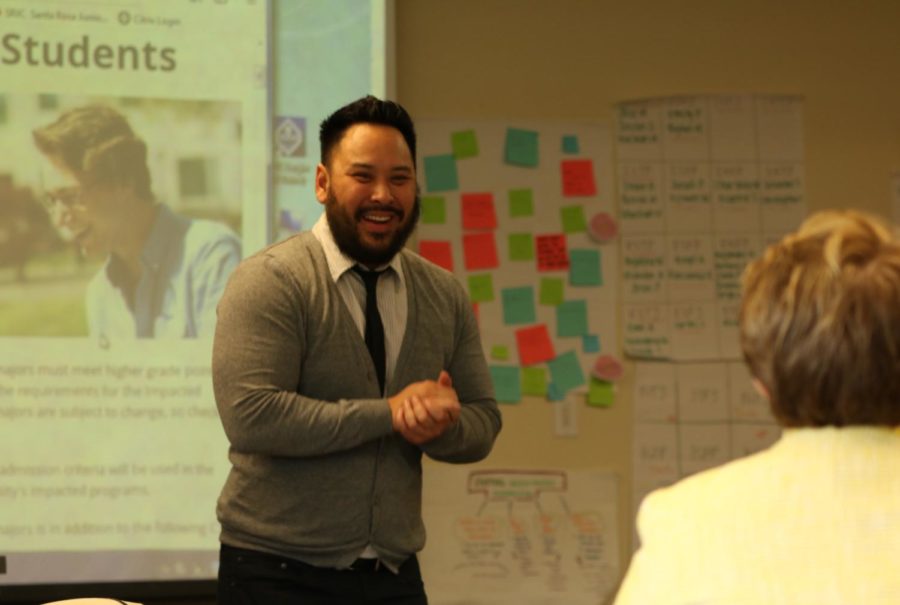Santa Rosa Junior College students can expect a smoother transfer to Sonoma State University thanks to its new reduction policies for impacted majors, SSU staff announced at a meeting Feb. 28 in Plover Hall.
A major can become impacted when the number of applicants is more than the available spaces. Thus, creating large waitlists for these crowded programs at many colleges.
Karen Moranski, senior associate vice president for academic programs at Sonoma State University, explained how two new policies will virtually eliminate waitlist bottlenecks by 2020, shrinking them from over 100 students to less than 10—or eradicating them completely.
The first new policy, a concerted effort by SSU faculty and staff, re-allocates resources to increase the number of sections needed in classes where there are historically bottlenecks, allowing SSU to admit additional lower division transfer students.
The second new policy lowers the acceptance criteria for transfer nursing students and allows them the choice to meet admissions requirements with either a minimum cumulative GPA of 2.7 for their 36 most recent units or a cumulative GPA of 2.7 for the eight prerequisite courses for the RN-to-BSN program.
Students from SRJC, the largest transfer institution for SSU, have always received “The Bump” — what SSU’s admissions web page describes as “preference given to students within SSU’s local service area which encompasses Sonoma, Napa, Marin, Lake, Solano and Mendocino Counties” — but these new policies guarantee eligible SRJC transfer students’ acceptance into SSU.
“We’re very excited about these changes,” Moranski said. “We particularly want to be open for Spring enrollment for transfer students on an ongoing basis and also want to be more open to lower division transfer students.”
The 11 impacted majors at SSU include biology, pre-business, communication studies, criminology and criminal justice studies, early childhood studies, human development, liberal studies, pre- and post-licensure nursing, psychology, sociology and kinesiology—with kinesiology being No. 1.
The need reduction policies regarding impacted majors is two-fold, said Moranski. Firstly, an administration change at SSU over the past two-and-a-half years resulted in officials wanting to serve more locals within the North Bay, and secondly, severely impacted majors in recent years sometimes resulted in no Spring admissions.
“SSU has been under-serving transfer students and is re-committing to the mission of serving them,” Moranski said.
A transfer scholarship is also in the works, she explained. “I’m hoping soon we can have something available.”
Also in the works is a new intake advising program, according to Alvin Nguyen, director of SSU’s center for transfer and transition programs.
Once the program is up and running, a pre-transfer adviser will assist students from the beginning of their transfer experience right through to their transfer orientation, providing them with an academic, social, personal and emotional safety net.
The ambassador program will assist them through the next phase of their education, providing current and continuing transfer students support with peer-to-peer mentoring.
Money Magazine recently ranked SSU No. 12 out of 727 colleges for its transfer student enrollment and completion rates.
“SSU has the best two-year graduation rate of all 23 state universities,” Moranski said.
All of which spells success for SRJC’s future transfer students.




